FISHING REPORT: Red Snapper Weekend comes and goes. The word of the season? 'Mayday!'
The two-day South Atlantic red-snapper “season” came and went, and in its wake is the usual head shakes and a general consensus.
“There’s got to be a better way.”
Good news: The folks at Florida’s Fish and Wildlife offices are trying to aid the effort.
Bad news: Eventually, they have to convince the feds.
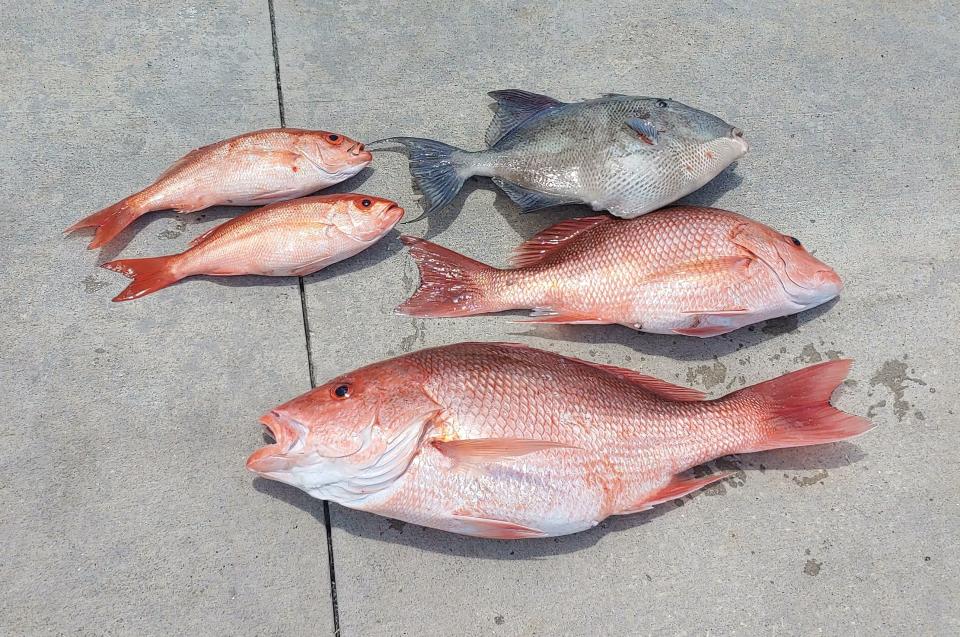
More fishing news: Face it, you're gonna catch catfish. What do you do next?
Growing: New Smyrna Outfitters expands its fishing footprint
Summer on the water: When they bring the heat, break out the big stuff
If interested, there was a lot to learn last weekend at New Smyrna Beach’s public boat ramp on the north causeway, where a crew of FWC field workers chronicled snapper catches.
They also put on their DNA caps, chiseling away ear bones, snipping pieces of fins and chatting with anglers to get a roundabout idea of where they were catching their individual limits of one red snapper per day.
Research!
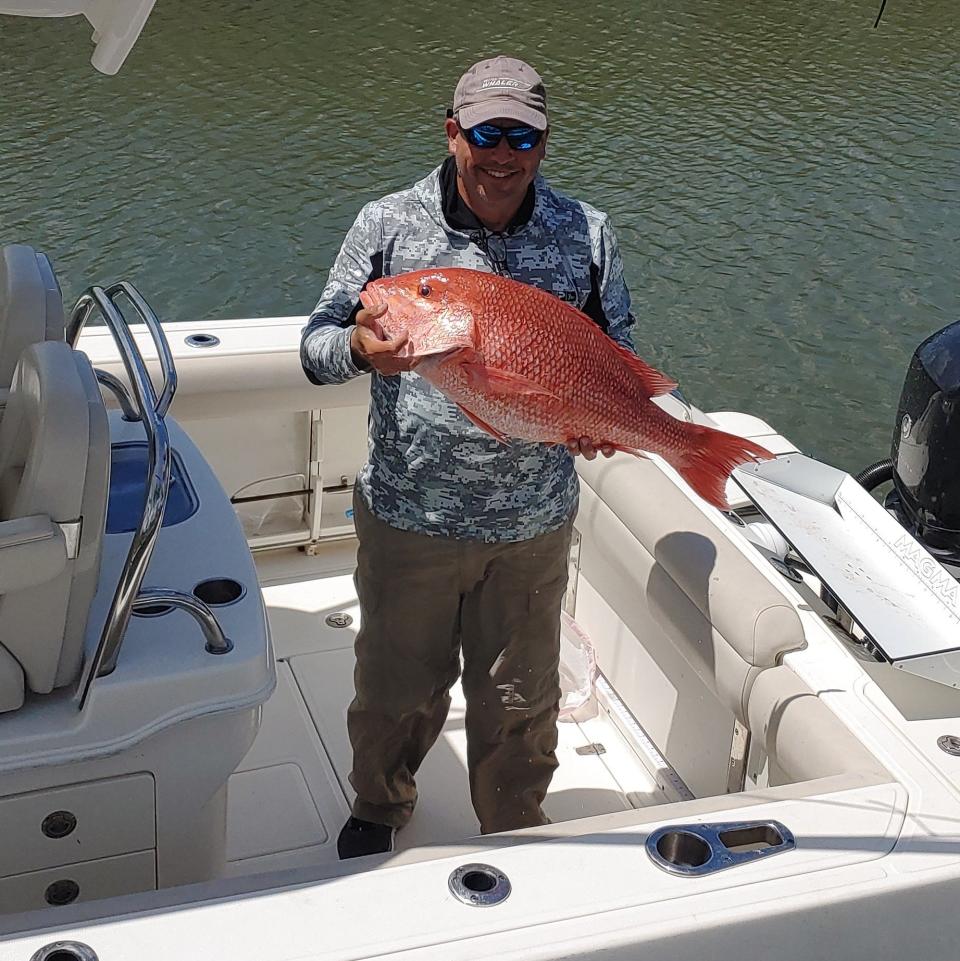
The hope seems to be, let’s gather enough evidence to show NOAA’s fishery division that it’s OK to loosen the grip on red snapper harvesting. The ear bone (the otolith, technically) can be looked into, and its rings, like a tree, tell a fish’s age.
DNA from the fin clippings help determine how many different family trees are in the sea — the more the better, of course.
Interestingly, or maddeningly, it’s different on Florida’s Gulf Coast, where the state of Florida is given the call on determining red snapper season. Yes, there’s a difference over there. They get a total of 57 days from mid-June through Thanksgiving weekend — 45 days right off the bat, then five other weekends (two of them three-day weekends).
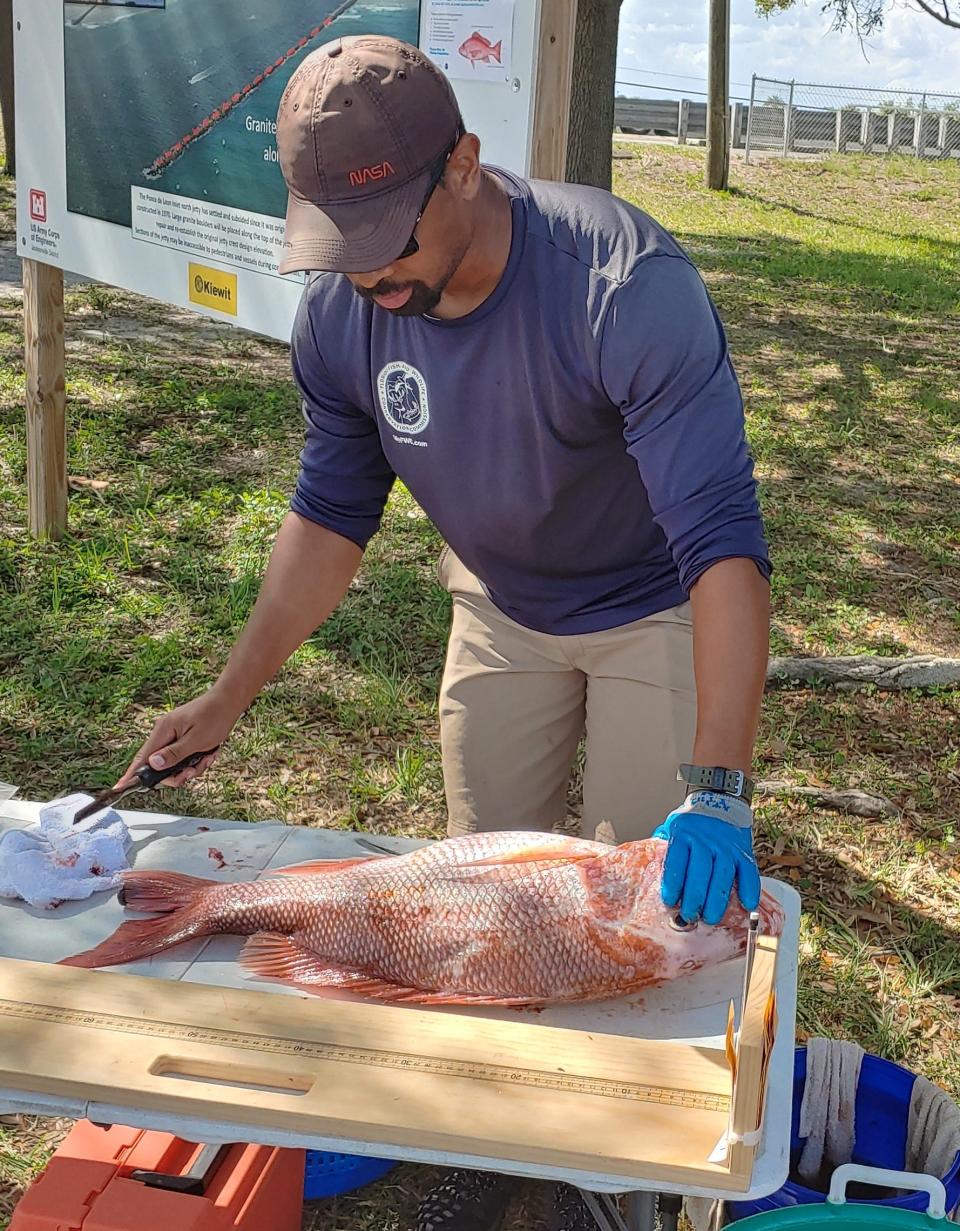
Depressed enough yet? We haven’t even talked about the danger of it all, as eager “sailors,” many of them on aging SS Minnows, just have to “get out there” and get that annual red snapper.
Word on the street suggests that the words in the ocean were occasionally “Mayday, mayday!” It was a busy couple of days for the Coast Guard, but past experience told them it was coming, especially given last weekend’s rough conditions.
“The seas were rough, and there was a big wind change throughout the day,” says Charlie Beardsley, a local Coast Guard Auxiliary staff officer for vessel exams and navigation systems. “It ended up with a lot of inexperienced boaters going out without enough knowledge with them past the jetties. And some were getting into trouble.
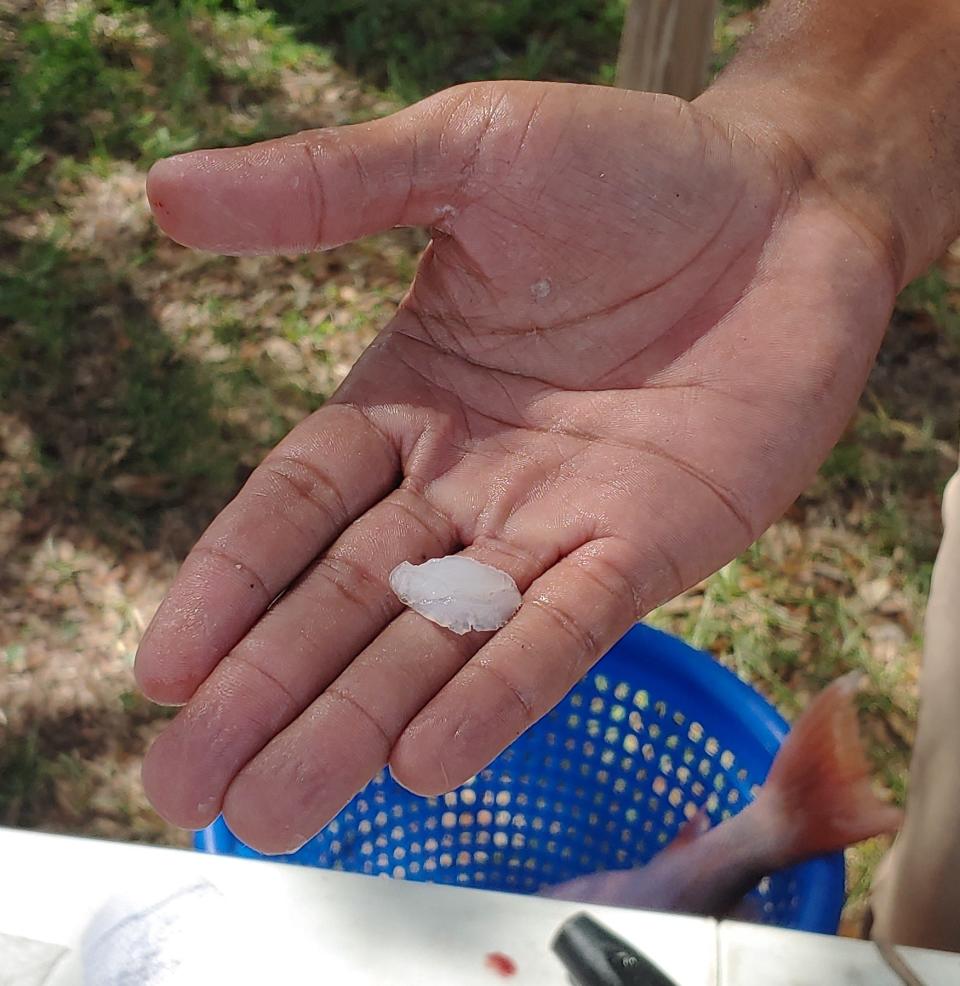
“You get all types of boats, of different shapes and sizes, and all levels of experience.”
If nothing else, lengthening the season would lessen those anxieties and stresses, Beardsley feels.
“I think the ‘weekend warrior’ boater wouldn’t be saying, ‘hey, we haven’t been offshore in a long time,’ and not looking at sea heights or weather in general, and just going for it because there’s such a limited time for red snapper. If made a month long, for instance, it would probably bring down all the aspects of danger and whatnot.”
All he has to do is convince the Feds. Get back to us on that.

Halifax/Indian River
Starting on the south end, around Oak Hill and Edgewater, Art Mowery says the heat is making things tougher, but he’s still finding some trout and scattered reds.
“You just have to hunt them down,” he says.
As we troll to the north, it seems this week’s full moon turned on the mangrove snapper.
“I’m catching them on the deeper oyster bars — 5 feet-plus — around Ponce Inlet using anything from shrimp to small jigs," says Billy Pettigrew (RedfishTails.com).
Further inside the lagoon, he says, docks and bridges are also holding mangroves, while sharks are still showing no courtesy — “looking for an easy meal,” Billy says before adding you can also find Spanish mackerel, ladyfish and blues if you slow-troll small silver spoons or swim baits along the edge of the channels.
Capt. Jeff Patterson (Pole Dancer charter) seconds the motion on mangrove snapper, some of them up to 2 pounds, which is fairly stout for inshore.
"We've limited out fairly quick several days," he says.
That limit, by the way, is five per day, per angler.
Patterson also reports big reds in and around the inlet, along with tarpon.
Gene Lytwyn (The Fishin’ Hole) has also heard some talk about tarpon near Ponce Inlet, while echoing the mangrove snapper chatter and including some sheepshead. Trout and snook around the bridges and docks, he adds, if you get there early.
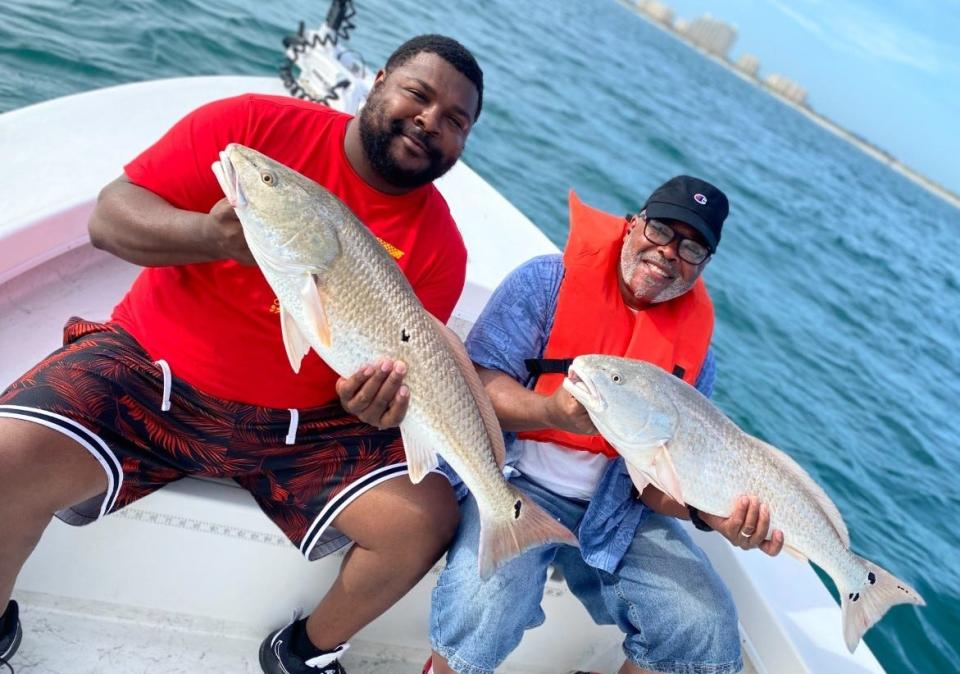
Surf
Good luck finding sandfleas, which are still in short supply this year. If you don’t get lucky, fresh shrimp is an obvious alternative, says BJ Taylor (Southern Bred Fishing), as are popular artificials such as FishBites and Fish Gum tipped with shrimp.
“The main bite has been a few decent whiting and croakers, along with the catfish,” BJ says. “The deeper holes and cuts between the sandbars have been holding better fish.”
Gene Lytwyn is also talking whiting and small sharks in the surf, while passing along pier-fishing talk of sheepshead and flounder. Not many, but some.
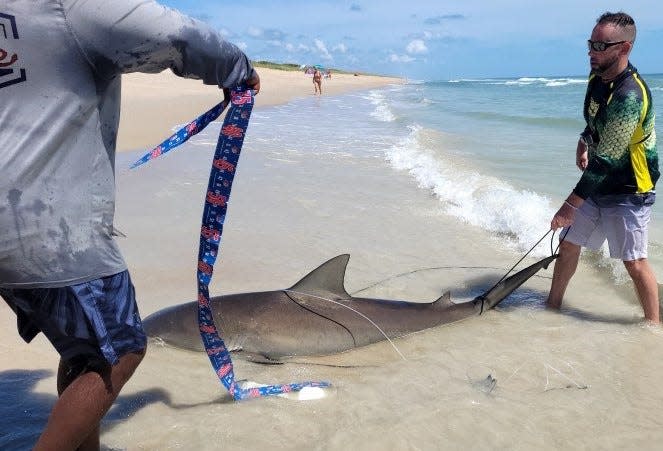
Offshore
Billy Pettigrew checks back in to report a “great flounder bite” just off the beach on the nearshore.
“Fish the depressions just off the hard bottom, or the top of a hump in the 30-50 foot range,” he says. “Use shrimp, finger mullet and even mud minnows out there.”
Further offshore, the Sea Spirit’s customers were still returning to the docks with sizeable offerings, coming off a successful two-day red-snapper season last weekend.
St. Johns
The Dog Days of summer can be tough, but with the annual bake comes news, eventually, of shrimp making their way south in the St. Johns.
“I’ve heard there’s some shrimp coming in on the north end of Lake George,” says Kerry McPherson (South Moon Fish Camp in Astor). “If true, they’re probably small, which is normal for this time of year. If they stay until late August or September, they’ll get some size to ’em.”
To the south in DeLand, at Highland Park, Capt. Bryn Adams says the best bet is to get out on the main river before and around dawn (bring the bug spray!), when you can find some bass who favor wild shiners but aren’t always willing to ignore an artificial (“like the Whopper Plopper,” Bryn says).
Or you can traverse the banks and below the tree tops to pitch minnows or crickets to still find some warmouth.
Also . . .
You know it’s time for the annual membership drive when the Halifax Sport Fishing Club breaks out the hot dogs and beans.
Next Thursday’s monthly gathering (July 21, 6:30 p.m.) includes free grub and a membership pitch, along with some shark-fishing talk from Dustin Smith and his crew with New Smyrna Shark Hunters — it’s interesting stuff.
More info: HSFC.com.
Hook, line and clicker
We want to see your most recent catch. Email your fish photos to ken.willis@news-jrnl.com.
Please include first and last name of angler(s), as well as type of fish (we're occasionally stumped). All are included with our online fishing report, and some occasionally make the print edition.
This article originally appeared on The Daytona Beach News-Journal: Mayday! Red snapper weekend in Florida brings some issues

